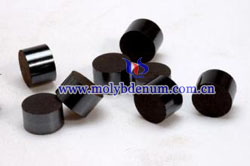Cobalt Molybdenum Sulfur-tolerant Methanation

Cobalt molybdenum sulfur-tolerant methanation catalyst has a special sulfur-tolerant capability, so it is widely used. In the process of using the sulfide catalyst will show deactivation phenomenon and carbon deposition is considered to be the main reason for inactivation. However, in the course of the reaction, the reaction conditions are different, so deactivation reasons are different.
After activity evaluation and exhaust sulfur content analysis we can know cobalt molybdenum sulfur-tolerant methanation catalyst in the initial stages the activity fuctuations found, the loss of sulfur on the catalyst surface is the main reason for catalyst deactivation at the initial stage. Besides, the oxidation of water to the catalyst surface also led to catalyst activity decline and carbon deposition is not the main reason for inactivation.
Cobalt Molybdenum Catalyst Production Processes:
1. To use a certain concentration of cobalt nitrate solution equivalent-volume impregnation r-Al2O3 carrier to make CoO capacity is on 5% (W), dried at 110 ℃ for 4 hours. Then equivalent-volume impregnation ammonium molybdate solution, MoO3 capacity is 10% (W), dried at 110 ℃ for 4h and calcined at 300 ℃ for 8 hours.
2. To use different concentrations of K2CO3 solution for equivalent-volume impregnated, the capacity of K2CO3 is 0%, 1%, 5% and 15% (W).
3. Finally, dried at 110 ℃ for 4 hours can obtain oxidation state catalyst sample.
If you have got any question or inquiry regarding molybdenum, please feel free to contact us by email: sales@chinatungsten.com, sales@xiamentungsten.com or by telephone:86 592 512 9696/86 592 512 9595.
